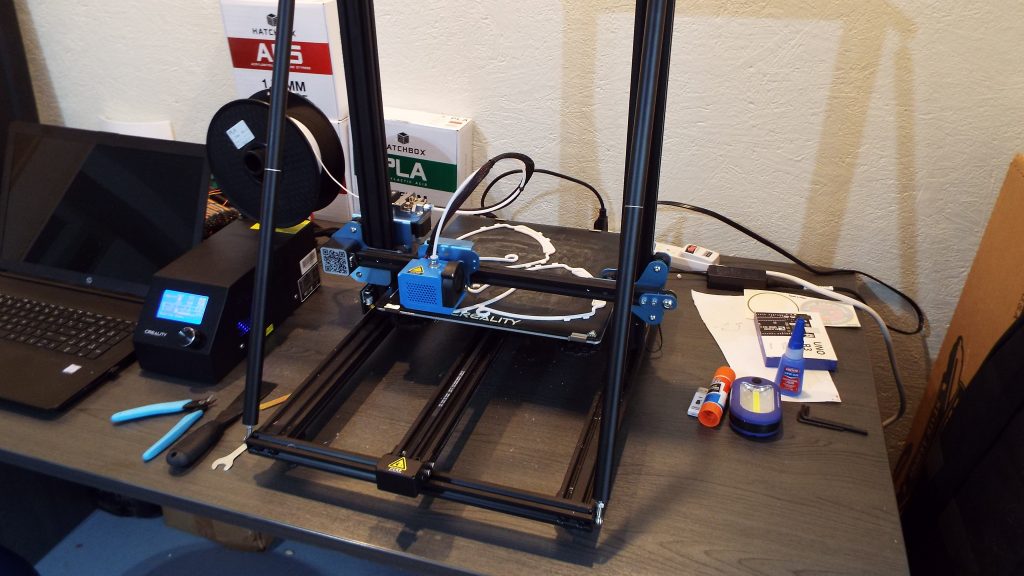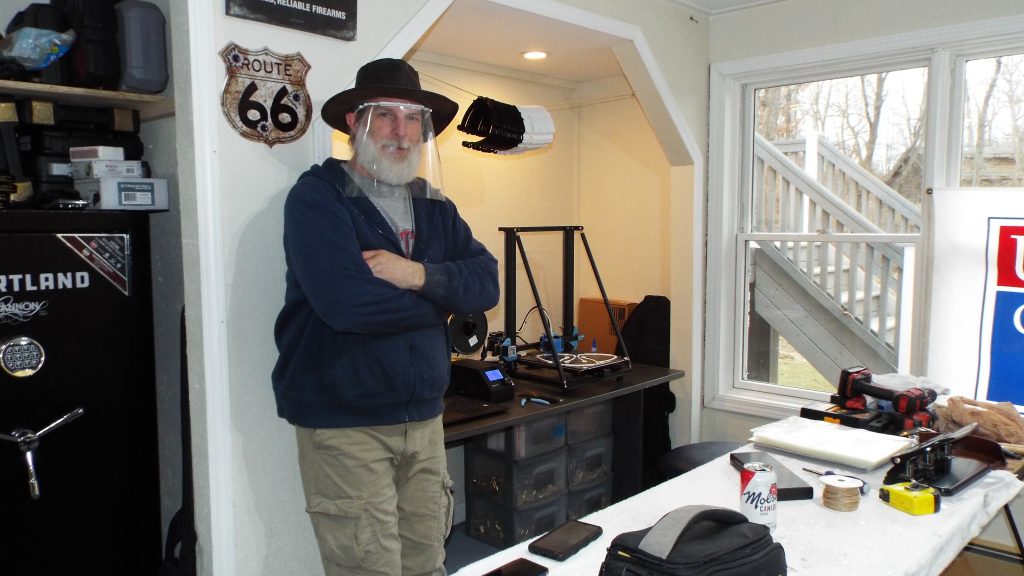The COVID-19 pandemic has caused many businesses to temporarily close their doors and send their workers home. Chris Sorgatz, a project chief for validation at FCA, may be at home, but the virus that’s on the top of everyone’s minds is keeping him busy.
Sorgatz is using his passion for 3D printing to change people’s lives. 3D printing is an additive manufacturing process where a digital file can be used to create a solid object through successive layers of material. Sorgatz is printing and donating face shields to local hospitals, nursing homes and anyone else that he can safely reach. Demand is through the roof, said Sorgatz, citing that among those who have expressed interest in the face shields are nursing homes, VG’s grocery markets and the VA hospital in Ann Arbor.
“I would like to help anyone that could take advantage of these and feel safer, be safer in their work environment,” said Sorgatz, describing how the labor of love that inspired him to turn on his printers came from reading a Facebook post.
“Well, in this case I am on a couple of groups that talk about anything and everything, and it was brought to my attention a few weeks back that face shields were in short supply, but we could do something about it.
“A gentleman out of Sweden had already made a design … so he’d done the prototyping for us and was open source sharing the file. And the beauty of it was its simplicity and functionality.”
This is day six. Sorgatz and his two printers have been producing an average of 40 to 50 face shields per day. The face shields consist of two parts: a 3D-printed frame or headband (made using 1.75 mm polylactic acid, or PLA, 3D filament) and a sheet of clear transparency film, the kind that are used for overhead projections. Sorgatz uses a paper punch to create mounting holes along the long side of the transparency before attaching it to the studs on the frame.

PLA is popular for amateurs and professionals alike. It’s a special type of thermoplastic made from organic materials, namely cornstarch and sugarcane. — 3D Insider
“There’s no more processing needed,” he said.
“They’re good and flexible. Somebody in a pinch could use it, maybe up to a week.
“And I love what it does. I’ve handed them to people and I can tell, just the act of giving … for something that is designed to protect you, it’s changing people’s lives. And I love the idea of, you know, helping to preserve folks’ lives.
“My wife early on thought I was nuts. She’s like, come on, you’ve gotta be rational about this, who’s going to use these? But, when they started flying out the door, you know, now she’s converted. She’s in there helping me. When the printer shuts off, she’s cleaning the bed and firing it back up for me.
“So, yeah, you get invigorated when you’re doing something good to help people from a time that you think you can only sit around.”




